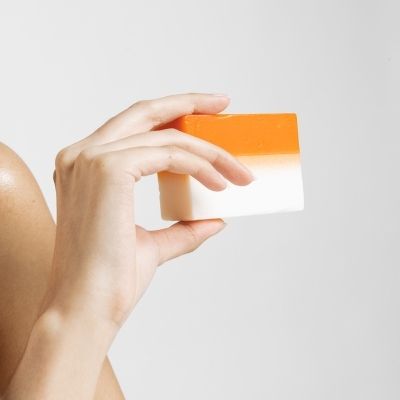This is one of the most common types of soap to make. Its is normally made from scratch, using lye and oils.
What is Cold Process Soap?
Although this process is known as the cold process it still involves some heat. When lye is mixed with water it creates its own heat. As well, the oils, particularly if they are solids such as lard or butter, must be melted into liquid first. For the cold process it is necessary for the lye and water mixture to be the same temperature as the oils. Once they are mixed together and poured into a mold, the molds are wrapped in a towel to keep in the heat. This helps the process known as saponification—the process of turning fats into soap. The measurements of lye and fat must be exact when using the cold process. If the ratios are not properly calculated and measured, the soap will have too much hydroxide. Too much hydroxide in soap will irritate or burn skin when used or the soap will be too soft and greasy.
Cold process soap making is quite long. Once the mixture has been poured in a mold, the soap must be cured. This drying process is typically a minimum of 4 weeks. This allows the saponification to finish and the soap to dry.

Pro's and Con's
Pro's
- Least expensive of the two processes
- Allows you to customize every single ingredient to suit your personal preferences.
- You can add fresh ingredients like milk and fruit/vegetable purees because you control the saponification process.
- The trace of cold process soap batter can be manipulated for a wide variety of techniques and effects. Thin trace can be used to make swirls, while thick trace soap creates frosting./li>
- With so many technique options, it’s a great way to get creative. The sky is the limit!
- The thick texture makes it great for suspending heavier additives.
- Generally considered a more “natural” bar of soap.
Con's
- Cold process soap must be made with sodium hydroxide lye, which can be dangerous when handled incorrectly. Learn how to handle it safely here.
- Cold process soap takes about 4-6 weeks to cure. The soap can be used before then, but it will last longer in the shower with a full cure.
- Some colorants tend to morph in the high pH environment of cold process soap, particularly some mica or FD&C based colorants.
- Fragrance oils can react with the high pH of cold process soap in negative ways, causing acceleration, ricing or seizing. Always make sure your fragrance behaves well in cold process!
- Vanilla color stabilizer is not reliable in cold process soap, and fragrance oils with a high amount of vanilla content will turn the soap brown.
- Because cold process soap batter is opaque, glitter does not show up very well when placed in the soap. Glitter still works great on top!
- Clean-up can be a long process depending on how many colors your soap was (more colors = more containers).




